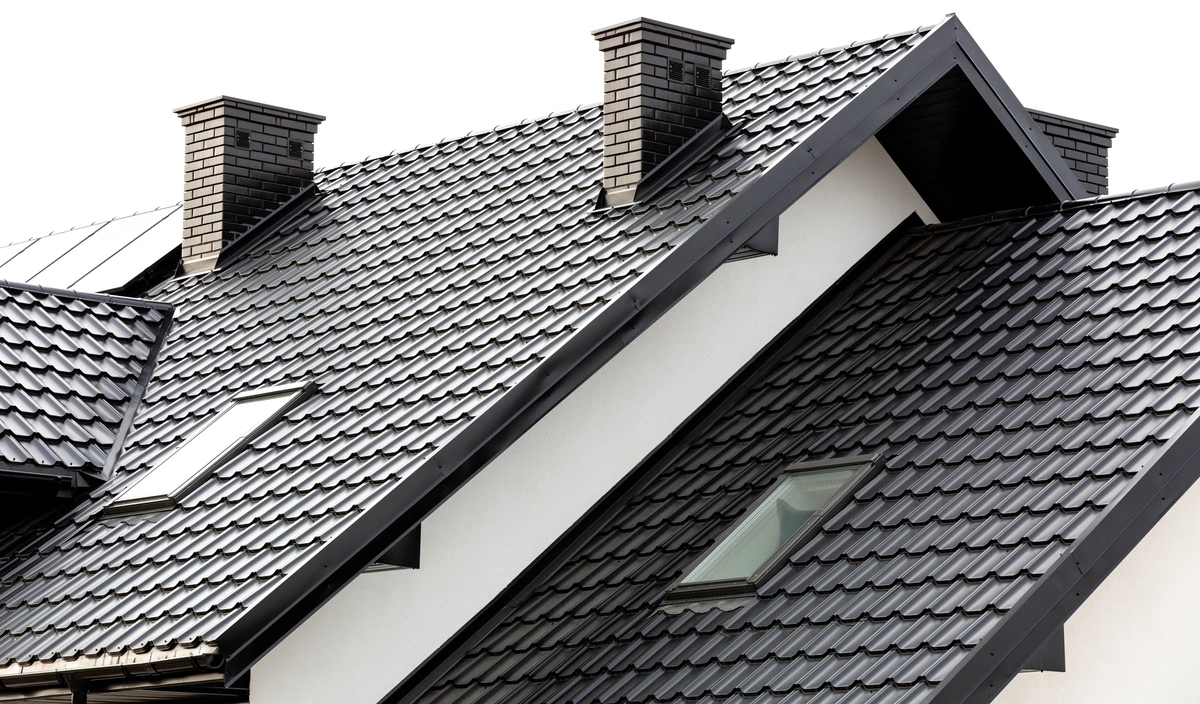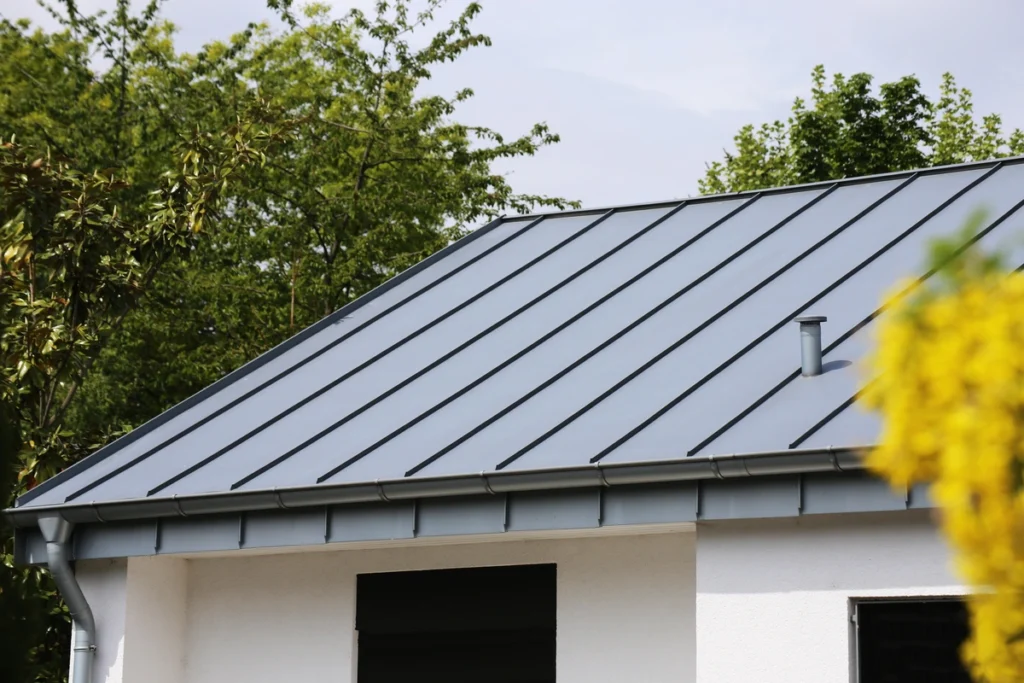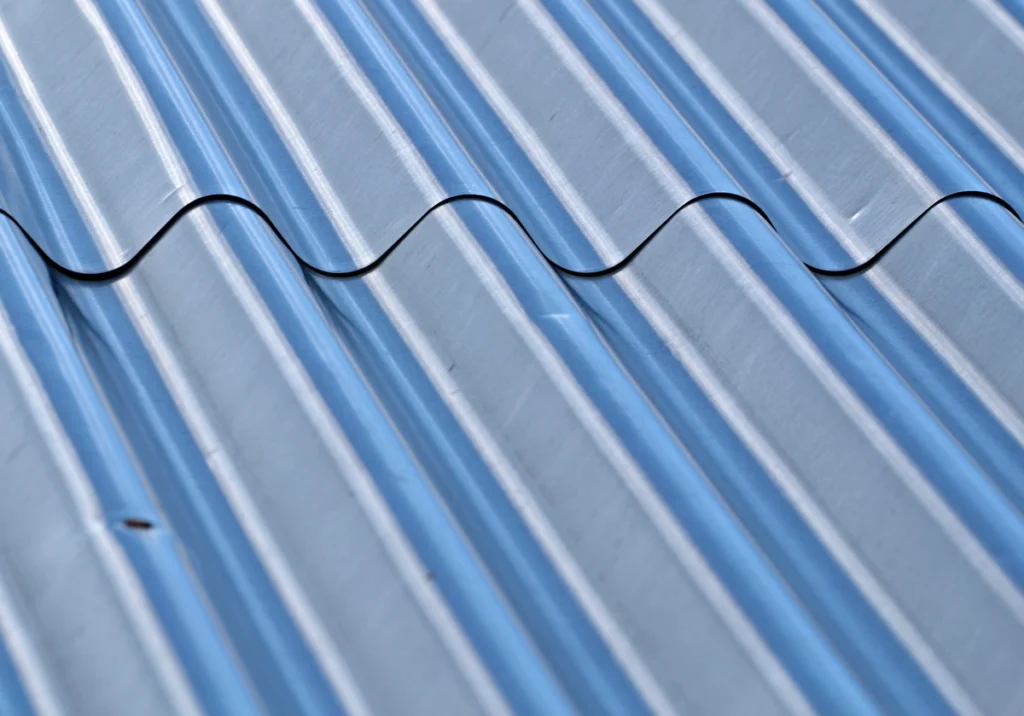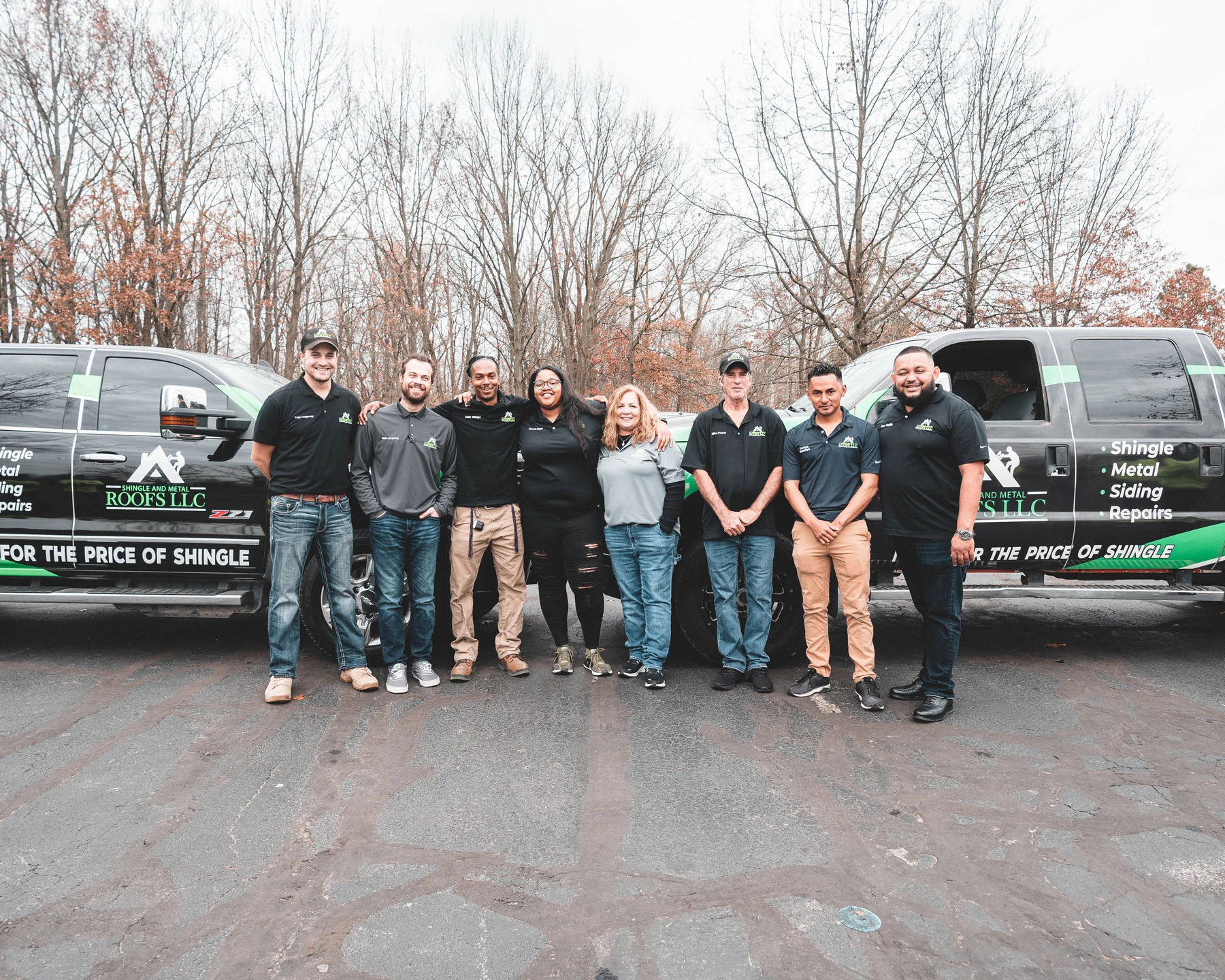
Are you considering installing a metal roof on your home but unsure about the slope requirements? Understanding the minimum slope for a metal roof is crucial to ensure proper drainage and prevent water infiltration. In this homeowner’s guide, we’ll dive into the details of metal roof slope requirements and what factors influence them.
Inside this blog:
- 4 factors affecting the slope of a metal roof
- A breakdown of the minimum slope for different types of metal roofs
- The importance of slope for a metal roof
Keep reading to learn more about the minimum slope for a metal roof so you can make sure your metal roof protects your home for decades!
4 Factors Affecting Metal Roof Slope

Before we delve into the minimum slope requirements for metal roofs, let’s explore the factors that influence these requirements:
1. Roofing Material
When considering the minimum slope for your metal roof, take into account the type of roofing material you plan to use. Standing seam metal roofs, with their raised seams that interlock to form a watertight barrier, typically require a higher minimum slope compared to corrugated metal roofs.
The profile and design of the roofing material can impact how effectively water drains off the roof surface, influencing the slope requirements for optimal performance and durability.
2. Climate
Your local climate conditions are another crucial factor to consider when determining the minimum slope for a metal roof. Areas prone to heavy rainfall or snow accumulation may require steeper roof slopes to facilitate proper water drainage and prevent water from pooling on the roof surface.
In regions with frequent storms or high winds, a higher slope can also help enhance the roof’s resistance to wind uplift and water infiltration, reducing the risk of damage during extreme weather events.
3. Roof Design
The design complexity of your roof, including its shape, size, and architectural features, can impact the minimum slope requirements for effective water drainage. Complex roof designs with multiple valleys, hips, and dormers may require higher slopes to ensure that water flows freely off the roof surface and does not accumulate in low-lying areas.
Additionally, roof features such as skylights or chimneys may require special considerations to prevent water penetration and leaks.
4. Building Codes
Local building codes and regulations govern the construction and installation of roofing systems, including minimum slope requirements for metal roofs. Building codes are often based on factors such as climate, roof type, and building height to ensure structural integrity and safety.
Before installing a metal roof, consult with your local building authority to verify the minimum slope requirements and ensure compliance with applicable building codes and regulations. Failure to meet these requirements could result in issues during the inspection process or potential liability in the event of roof damage or failure.
Minimum Slope for Different Metal Roof Types
Now that we’ve discussed the factors influencing metal roof slope requirements let’s take a closer look at the minimum slope for various types of metal roofs:
Standing Seam Metal Roof
When installing a standing seam metal roof, it’s crucial to adhere to the manufacturer’s recommendations regarding minimum slope requirements. While many standing seam roofs have a minimum slope of 3:12 or 4:12, some manufacturers may specify higher slopes for optimal performance.
The raised seams and concealed fasteners of standing seam roofs provide superior weather resistance, but proper slope is essential to prevent water from pooling and causing potential leaks or damage.
Corrugated Metal Roof

Corrugated metal roofs are popular for their affordability, durability, and ease of installation. With their characteristic wavy profile, corrugated metal panels offer effective water shedding and are suitable for low-slope applications.
However, it’s important to note that the minimum slope for corrugated metal roofs typically ranges from 1:12 to 3:12. While these roofs can handle relatively flat slopes, proper installation and waterproofing techniques are essential to prevent water infiltration and maintain structural integrity over time.
Metal Shingle or Tile Roof
Metal shingle or tile roofs combine the aesthetic appeal of traditional roofing materials with the durability and longevity of metal. These roofing systems are available in a variety of styles and designs, including shingles, tiles, and shakes, to suit different architectural preferences.
While metal shingle or tile roofs offer excellent weather resistance and require minimal maintenance, they still require a minimum slope of 3:12 or higher for proper water drainage. Ensuring adequate slope is essential to prevent water from ponding on the roof surface and to maintain the integrity of the roofing system for years to come.
Why Slope Matters for Metal Roofs
Ensuring the correct slope for your metal roof is essential for several reasons:
- Water Drainage: Proper roof slope allows rainwater, snowmelt, and debris to drain efficiently off the roof surface, preventing water pooling and potential leaks.
- Preventing Ice Dams: In cold climates, inadequate roof slope can lead to the formation of ice dams, which can cause water to back up under the roof covering and into the home. A steeper roof slope helps prevent ice dam formation and protects against water damage.
- Longevity: Metal roofs are designed to last for decades, but improper slope can accelerate wear and tear, leading to premature roof failure. By ensuring the correct slope, you can maximize the lifespan of your metal roof and protect your investment.
Will You Choose a Metal Roof?
Understanding the minimum slope requirements for a metal roof is essential for homeowners considering this durable and long-lasting roofing option. Factors such as roofing material, climate, roof design, and local building codes all influence the minimum slope needed to ensure proper drainage and prevent water infiltration.
By consulting with roofing professionals and adhering to manufacturer guidelines, homeowners can enjoy the benefits of a metal roof that not only enhances the aesthetics of their home but also provides reliable protection for years to come.
Contact our expert roofing contractors at Shingle and Metal Roofs to experience top quality customer service and dedicated workmanship. We can’t wait to hear your vision for your next roofing project–let’s get the ball rolling!


